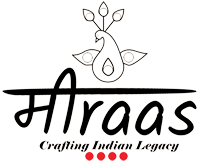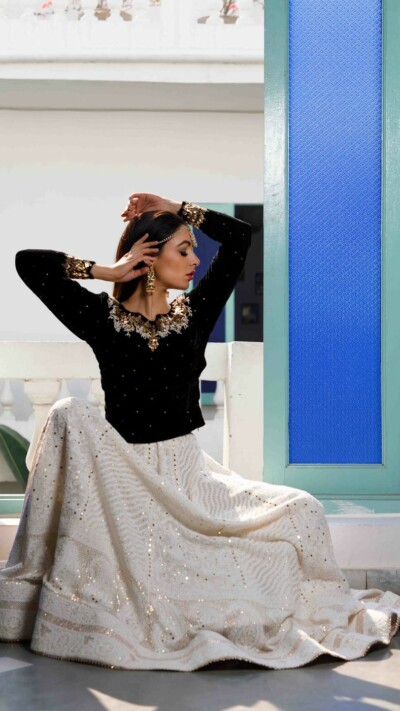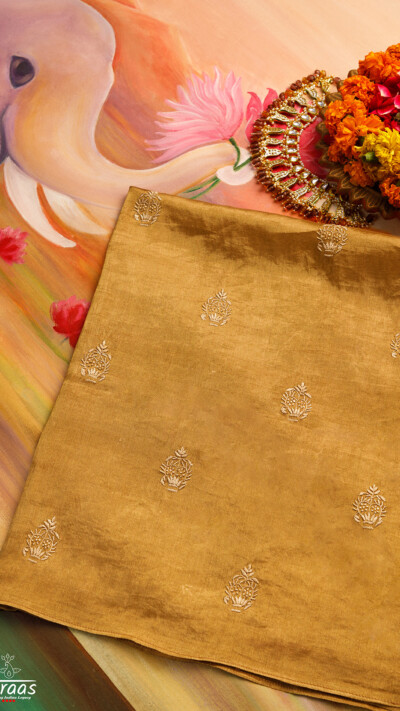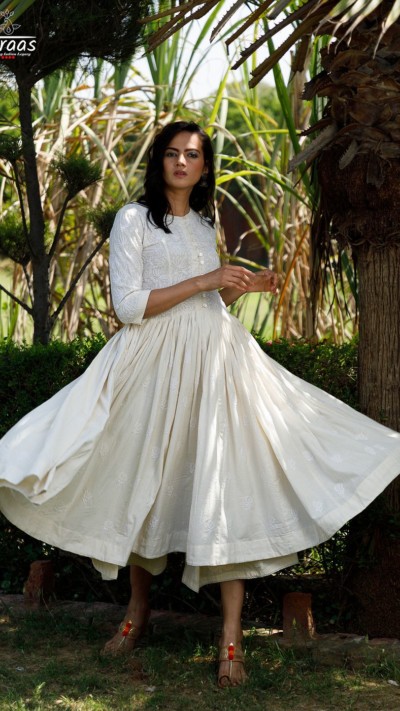
Please, enable Wishlist.
- Home
- Shop
- Dhanlakshami Chikankari Saree
- Advait Mens’ Chikankari
- Power Of Silence (Chikankari Kurta Edit)
- Ready To Ship
- Aari Zardozi
- Luxury Chikankari Dupattas
- The Wedding Collective
- Chikankari Statement Blouses
- Umrao Mukaish Collection
- Dopehri Chikankari Casuals
- Rajnigandha
- Rang Deenhi Shibori Collection
- Curated By Meiraas
- Saree
- Kurta
- Dupatta
- Blouse
- Top
- Stole
- Pants
- Handloom Chanderi
- Handloom Maheshwari
- Handloom Linen
- Handloom Cotton
- Handloom Organza
- Handloom Silk
- Cotton Silk
- Blog
- About
- Sustainability
Filter by categories
- Uncategorized
- Aari Zardozi
- Advait
- Chikankari Dupattas
- Chikankari Kurta Edit
- Chikankari Ready to Wear
- Curated By Meiraas
- Dhanlakshami Chikankari Sarees
- Dopehri
- Featured
- Gift Card
- Hand Spun Kosa Cotton & Chikan
- Rajnigandha Collective
- Rang Deenhi
- Ready to Ship
- Regalia - A Muakish Collective
- Statement Blouses
- The Wedding Collective
- Umrao
Filter by price
FILTER BY FABRIC
FILTER BY CRAFTS
Patta Boota Cotton Tunic & Palazzo Set
₹10,500.00
Please refer to last 2 images to see Size Chart of Tunic & Pants. You have to mention your size as per the chart in the checkout.
There are 2 sets in Pink & 1 set in Yellow. Please DM on our Instagram for any help or Whatsapp on 9810119795. The set can be made XXL on special request, please DM or Whatsapp.
THE SUSTAINABILITY QUOTIENT (TSQ):
Select options
This product has multiple variants. The options may be chosen on the product page
- Artisan Skill enhancement: Exclusive Meiraas Patta Patta Boota Boota Motif embroidery that is a mix of Aari & Chikankari in same motif.
- Handmade in India
- Chikankari garments are translucent by nature as they are mostly made on lighter cottons & in natural white or pastel shades. To wear a slip underneath is subjective to the wearer's comfort
- Only Kurta & Palazzo is available to shop from this post.
Jyamiti | Geometry
₹35,000.00
A rare classic of a Kurta, Jyamiti is a Royal Blue linen kurta, with 3 Taar Resham Tepchi Chikankari done allover the front & sleeves, to make it a grand royal attire, but with relaxed maximalism moodboard.
The Sustainability Quotient (TSQ):
Add to cart
- Fine Tepchi Work: This kurta has the rare 1 daana Tepchi work, where each stitch of tepchi looks like a small grain, making the embroidery style look extremely neat & subtle, yet impactful. This kind of Tepchi is rarely done in the commercial, or even premium market now.
- Sustainable fabric base - Pure Linen/Tussar Silk (choice of either as per order)
- Bespoke stitching.
Syamantak Mani
₹55,000.00
A rare classic of a Kurta, Syamantak Mani is a white pure linen kurta, with 2 Taar Chikankari done on re-created motifs of late 19th-early 20th century artwork. The kurta is a rarity that the men in maximalist Nawab era used to enjoy.
The Sustainability Quotient (TSQ):
Add to cart
- Re-Created motifs, commissioned by Meiraas, using late 19th & early 20th Century Chikankari motifs as an example. The references have been drawn from Textiles housed in state & national museums and well researched archival works on the subject.
- Exclusive Meiraas motifs carved following all traditional processes. No tracing of artwork.
- Use of the Crown Motif which belongs to early 20th Century, and is now with Meiraas unit.
- 2 Taar Chikankari - the motifs used here are a re-creation of late 19th century artwork, therefore the work could only be done using 2 Taar Chikankari, to embroider on each intricate detail.
- Rare stitches used in embroidery like Kaante, Hool, Jaali, Phanda, Rahet, Ghaspatti, Chanapatti vis a vis maximum 2-3 common stitches used in Kurtas.
- Sustainable fabric base - Pure Handwoven Linen.
- Bespoke stitching.
Made on Order Night Jasmine – Chikankari Chanderi Blouse Fabric
₹7,900.00
Note from the Founder:
"Meiraas has created and re created motifs of Archival quality that speak of the heritage of this craft and the history associated around it; wearing Sarees & Suits in Meiraas Chikankari is a luxury that our patrons love to save and invest into, to create their own heritage. We also wanted our patrons to enjoy the Luxury of Meiraas Archive Quality Chikankari on an everyday or more frequent basis, or mix & match with more crafts, that is why we decided to make these beautiful statement blouse fabrics, that can be worn with any saree and on any occasion - whether workplace meetings, brunches or cafe outings, or even weddings. We hope you enjoy these Everyday Luxury pieces from Meiraas" - Vidhi Rastogi, Head of Creative, Meiraas.
Khayal (Moodboard):
Raat ki Raani or Night Jasmine is a fragrance that we associate Lucknow deeply with. Used very liberally in our homes, since childhood, it is a fragrance after dusk, that we had grown accustomed to. Come monsoons, the sultry evenings in the homes of this regal city, would be wafting in the strong and sweet scent of this flower shrub.
Amongst many fragrances, which are signature of Awadh culture, Night Jasmine is most certainly an underrated, but a prominent one. The flower motif in this fabric is an imagination of the memories that this flower would evoke with its mellow scent.
Poshaak (About the fabric):
This Chikankari and Mukaish Top/Blouse fabric is an ethereal White on White beauty, with neat floral rows of embroidery on front, sleeves & back. The back has one stunning motif, a representative of Floral Creepers coming together to form a heart, at the back. The fabric is sufficient to make a stunning blouse to pair with many sarees, of same or different crafts. Please get the fabric full lined to make a blouse.
Imp:
Add to cart
- Chanderi catches buttery luminous colours; if you wish us to dye this in a shade you prefer, please email us after you have purchased the product.
- If you want us to stitch your blouse with this fabric too, then after shopping for the fabric you can drop us an email at namaste@meiraas.com
Surajmukhi – Chikankari Chanderi Blouse Fabric
₹7,900.00
Note from the Founder:
"Meiraas has created and re created motifs of Archival quality that speak of the heritage of this craft and the history associated around it; wearing Sarees & Suits in Meiraas Chikankari is a luxury that our patrons love to save and invest into, to create their own heritage. We also wanted our patrons to enjoy the Luxury of Meiraas Archive Quality Chikankari on an everyday or more frequent basis, or mix & match with more crafts, that is why we decided to make these beautiful statement blouse fabrics, that can be worn with any saree and on any occasion - whether workplace meetings, brunches or cafe outings, or even weddings. We hope you enjoy these Everyday Luxury pieces from Meiraas" - Vidhi Rastogi, Head of Creative, Meiraas.
Khayal (Moodboard):
In the summer of 2022, we travelled to the villages around Lucknow city, which have been inked into legends and ballads due to their vast stretches of Mango Orchards, full of sweet fragrance and even sweeter promises. It was here, that we chanced upon some small, but gorgeous stretches of Sunflower Fields, farmed for the much used Sunflower Oil. The sight was as beautiful as a William Wordsworth poem, and also one that was unexpected in the topography of Awadh. This wanted us to add one more motif to our bouquet of work based on Awadh region.
Surajmukhi is a stunning statement motif in a field of other flowers & trees.
Poshaak (About the fabric):
This Chikankari Top/Blouse fabric is a stunning Yellow beauty, with neat floral rows of embroidery on front, sleeves & back. The back has one stunning motif, a representative of Sunflower, at the back. The fabric is sufficient to make a stunning blouse to pair with many sarees, of same or different crafts. Please get the fabric full lined to make a blouse.
Imp:
Add to cart
- If you want us to stitch your blouse with this fabric too, then after shopping for the fabric you can drop us an email at namaste@meiraas.com
Chikankari & Mukaish Lehenga Skirt
₹59,500.00
This is an extremely Fine & Rare 3 Taar Chikankari Lehenga Skirt with Mukaish. Please note such Chikankari Lehengas are very rare and difficult to come by, and take months in production. Due to their rarity they are available as a single piece only.
The Lehenga is dyeable in any shade. Please reach out to us for colour customisation at namaste@meiraas.com
The Sustainability Quotient (TSQ):
Add to cart
- Very Fine Chikankari (Hand Embroidery Practised Since Ancient Age)
- Mukaish Embroidery (Ancient Beaten Metal Wire Embroidery)
- Hand Picked Ancient Archived Motifs
-
- Extremely Fine quality handwork, that is a rare find
- Pure Georgette Silk fabric that increases the longevity of the garment & makes it timeless
- Free Size fastening, so that this can be handed down generation to generation, making it Sustainable.
- Classic finishing of High quality Lining and Buckram, which makes the garment timeless & ageless.
Made on Order – Kamalini Tussar Silk
₹5,500.00
This Product is Made on Order
Tussar Silk catches gorgeous colours; if you wish us to dye this in a shade you prefer, please email us after you have purchased the product.
If you want us to stitch your blouse with this fabric too, then after shopping for the fabric you can drop us an email at namaste@meiraas.com
"Meiraas has created and re created motifs of Archival quality that speak of the heritage of this craft and the history associated around it; wearing Sarees & Suits in Meiraas Chikankari is a luxury that our patrons love to save and invest into, to create their own heritage. We also wanted our patrons to enjoy the Luxury of Meiraas Archive Quality Chikankari on an everyday or more frequent basis, or mix & match with more crafts, that is why we decided to make these beautiful statement blouse fabrics, that can be worn with any saree and on any occasion - whether workplace meetings, brunches or cafe outings, or even weddings. We hope you enjoy these Everyday Luxury pieces from Meiraas" - Vidhi Rastogi, Head of Creative, Meiraas.
The 7 petal Lotus motif is extremely beautiful and the rarest one; the motif is made with fine ghaspatti stitch, making it look ethereal. This motif will come allover on the blouse with small keel motif. The embroidery is done in same colour thread as Tussar base. Please get it fully lined when getting it stitched. It will work beautifully with most sarees as an added oomph.
Add to cart
Phool Manjari – Tussar Silk
₹5,500.00
Tussar Silk catches gorgeous colours; if you wish us to dye this in a shade you prefer, please email us after you have purchased the product.
If you want us to stitch your blouse with this fabric too, then after shopping for the fabric you can drop us an email at namaste@meiraas.com
"Meiraas has created and re created motifs of Archival quality that speak of the heritage of this craft and the history associated around it; wearing Sarees & Suits in Meiraas Chikankari is a luxury that our patrons love to save and invest into, to create their own heritage. We also wanted our patrons to enjoy the Luxury of Meiraas Archive Quality Chikankari on an everyday or more frequent basis, or mix & match with more crafts, that is why we decided to make these beautiful statement blouse fabrics, that can be worn with any saree and on any occasion - whether workplace meetings, brunches or cafe outings, or even weddings. We hope you enjoy these Everyday Luxury pieces from Meiraas" - Vidhi Rastogi, Head of Creative, Meiraas.
The beautiful miniature motif of a twig of beautiful flowers, makes Phool Manjari a rare motif; it is also a very old motif, & such miniature motifs are not crafted now. This motif will come on front & back of the blouse. This is coupled with a small keel boota on the sleeves. The embroidery is done in white on natural Tussar base. Please get it fully lined when getting it stitched. It will work beautifully with most sarees as an added oomph.
Add to cart
Made On Order – Manjari Tussar Silk
₹5,500.00
Tussar Silk catches gorgeous colours; if you wish us to dye this in a shade you prefer, please email us after you have purchased the product.
If you want us to stitch your blouse with this fabric too, then after shopping for the fabric you can drop us an email at namaste@meiraas.com
"Meiraas has created and re created motifs of Archival quality that speak of the heritage of this craft and the history associated around it; wearing Sarees & Suits in Meiraas Chikankari is a luxury that our patrons love to save and invest into, to create their own heritage. We also wanted our patrons to enjoy the Luxury of Meiraas Archive Quality Chikankari on an everyday or more frequent basis, or mix & match with more crafts, that is why we decided to make these beautiful statement blouse fabrics, that can be worn with any saree and on any occasion - whether workplace meetings, brunches or cafe outings, or even weddings. We hope you enjoy these Everyday Luxury pieces from Meiraas" - Vidhi Rastogi, Head of Creative, Meiraas.
The beautiful miniature motif of a twig of beautiful flowers found in the wild, makes Manjari a rare motif; it is also a very old motif, & such miniature motifs are not crafted now. This motif will come allover on the blouse. Please get it fully lined when getting it stitched. It will work beautifully with most sarees as an added oomph.
Add to cart
Aamra Patti – Tussar Silk
₹5,500.00
Tussar Silk catches gorgeous colours; if you wish us to dye this in a shade you prefer, please email us after you have purchased the product.
If you want us to stitch your blouse with this fabric too, then after shopping for the fabric you can drop us an email at namaste@meiraas.com
"Meiraas has created and re created motifs of Archival quality that speak of the heritage of this craft and the history associated around it; wearing Sarees & Suits in Meiraas Chikankari is a luxury that our patrons love to save and invest into, to create their own heritage. We also wanted our patrons to enjoy the Luxury of Meiraas Archive Quality Chikankari on an everyday or more frequent basis, or mix & match with more crafts, that is why we decided to make these beautiful statement blouse fabrics, that can be worn with any saree and on any occasion - whether workplace meetings, brunches or cafe outings, or even weddings. We hope you enjoy these Everyday Luxury pieces from Meiraas" - Vidhi Rastogi, Head of Creative, Meiraas.
The wholesome miniature motif of Mango resting upon Mango leaves, makes Aamra Patta a rare motif; it is also a very old motif, & such miniature motifs are not crafted now. This motif will come on front & back of the blouse. The sleeves will have smaller keel motif. Please get it fully lined when getting it stitched. It will work beautifully with most sarees as an added oomph.
Add to cart
The Crown – Gold Zari Silk
₹6,500.00
If you want us to stitch your blouse with this fabric too, then after shopping for the fabric you can drop us an email at namaste@meiraas.com
"Meiraas has created and re created motifs of Archival quality that speak of the heritage of this craft and the history associated around it; wearing Sarees & Suits in Meiraas Chikankari is a luxury that our patrons love to save and invest into, to create their own heritage. We also wanted our patrons to enjoy the Luxury of Meiraas Archive Quality Chikankari on an everyday or more frequent basis, or mix & match with more crafts, that is why we decided to make these beautiful statement blouse fabrics, that can be worn with any saree and on any occasion - whether workplace meetings, brunches or cafe outings, or even weddings. We hope you enjoy these Everyday Luxury pieces from Meiraas" - Vidhi Rastogi, Head of Creative, Meiraas.
Stunning Gold Zari Silk blouse fabric with Chikankari motifs of Crown or Taaj Boota that has a historicity dating back to the Nawab era. Such stunning blouses will pair with many sarees and add an extra oomph to all of them. Good Chikankari blouse fabrics are rare & ones that are always in demand. Please get it fully lined when getting it stitched.
Read more
Guldaan – Gold Zari Silk
₹6,500.00
If you want us to stitch your blouse with this fabric too, then after shopping for the fabric you can drop us an email at namaste@meiraas.com
"Meiraas has created and re created motifs of Archival quality that speak of the heritage of this craft and the history associated around it; wearing Sarees & Suits in Meiraas Chikankari is a luxury that our patrons love to save and invest into, to create their own heritage. We also wanted our patrons to enjoy the Luxury of Meiraas Archive Quality Chikankari on an everyday or more frequent basis, or mix & match with more crafts, that is why we decided to make these beautiful statement blouse fabrics, that can be worn with any saree and on any occasion - whether workplace meetings, brunches or cafe outings, or even weddings. We hope you enjoy these Everyday Luxury pieces from Meiraas" - Vidhi Rastogi, Head of Creative, Meiraas.
Stunning Gold Zari Silk blouse fabric with Chikankari motifs of Guldaan (flower vase) on front & back and delicate 3 petal fern done on sleeves. The embroidery is done with rare murri stitch. Such stunning blouses will pair with many sarees and add an extra oomph to all of them. Good Chikankari blouse fabrics are rare & ones that are always in demand. Please get it fully lined when getting it stitched.
Add to cart
Filter by categories
- Uncategorized
- Aari Zardozi
- Advait
- Chikankari Dupattas
- Chikankari Kurta Edit
- Chikankari Ready to Wear
- Curated By Meiraas
- Dhanlakshami Chikankari Sarees
- Dopehri
- Featured
- Gift Card
- Hand Spun Kosa Cotton & Chikan
- Rajnigandha Collective
- Rang Deenhi
- Ready to Ship
- Regalia - A Muakish Collective
- Statement Blouses
- The Wedding Collective
- Umrao























